The amount of gas adsorbed (x/m) is the function of temperature and pressure, which can be shown as under
xm= f(p,T)
The variation x/m and p, at constant temperature is known as adsorption isotherm
i.e., x/m=f(p) at constant temperature
Seven type of physisorption isotherms are known. Some of them are shown below

Physisorption Type I. Where there is formation of monolayer on the surface of adsorbent, this type of curve is obtained.
Physisorption Type II. The transition point 'X' of this physisorption isotherm indicates, that the formation of mono layer is complete and that of multilayer is started.
Physisorption Type III. This isotherm has no transition point. In this type of curve, the multimolecular starts before the completion of monomolecular layer.
On the basis of this comprehension, answer teh following question from the physisorption isotherm of a gas on a solid shown as under.
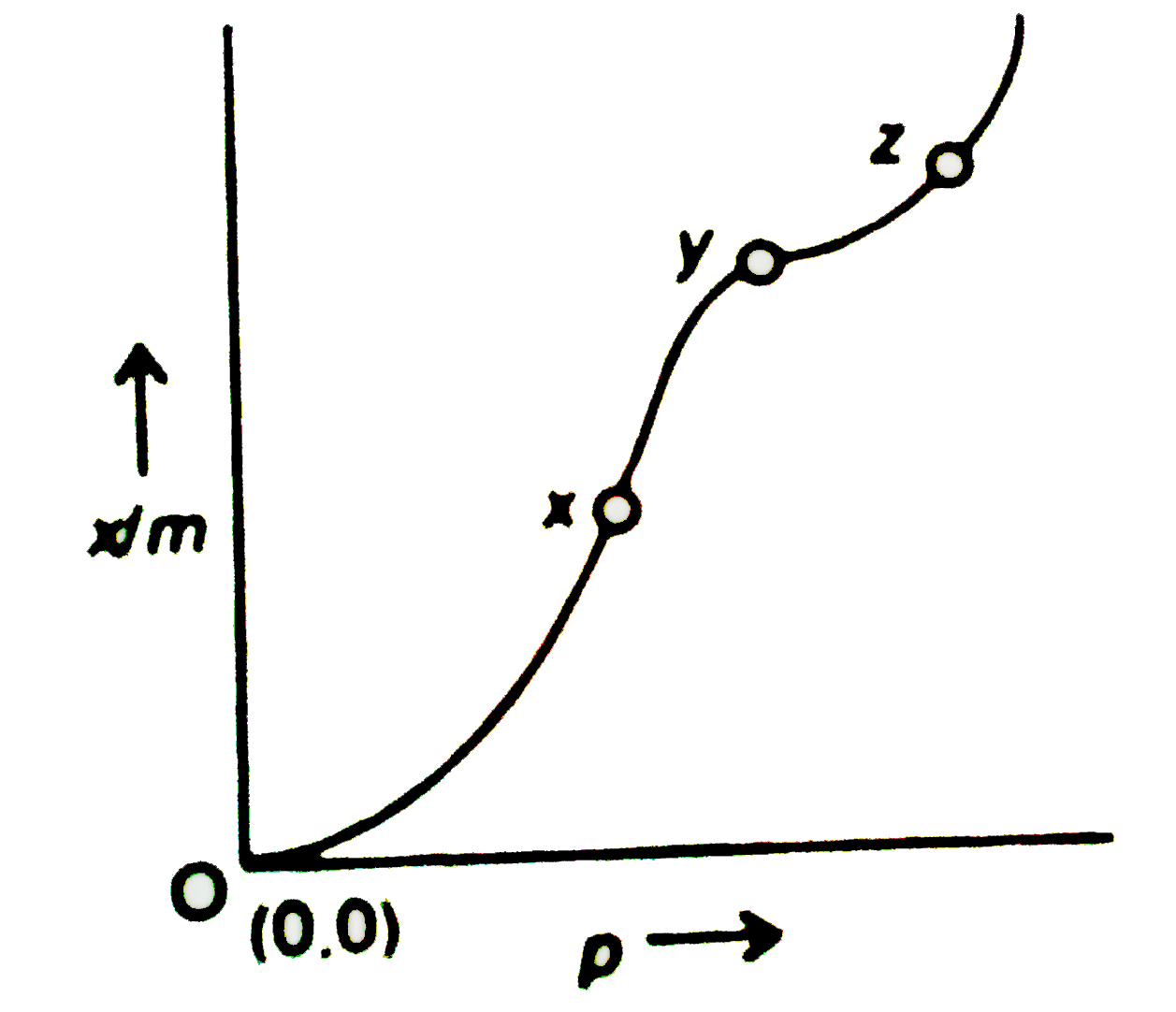
The portion XY of the curve correctly represents
x/m is directly proportional to pn, where n is greater than 1
x/m is directly proportional to pn where n≤1,
monolayer formation
Both A and C
The correct Answer is:A
Topper's Solved these Questions
- SURFACE CHEMISTRYBOOK - DINESH PUBLICATIONCHAPTER - SURFACE CHEMISTRYEXERCISE - Matrix Match Type MCQs
3 Videos
- SURFACE CHEMISTRYBOOK - DINESH PUBLICATIONCHAPTER - SURFACE CHEMISTRYEXERCISE - Integer Type Question
4 Videos
- SURFACE CHEMISTRYBOOK - DINESH PUBLICATIONCHAPTER - SURFACE CHEMISTRYEXERCISE - MCQ with only one correct answer
20 Videos
- STRUCTURE OF ATOMBOOK - DINESH PUBLICATIONCHAPTER - STRUCTURE OF ATOMEXERCISE - Reason Type Questions
1 Videos
- THE ALKALI METALSBOOK - DINESH PUBLICATIONCHAPTER - THE ALKALI METALSEXERCISE - ULTIMATE PREPARATORY PACKAGE
19 Videos
Similar Questions
Knowledge Check
The amount of gas adsorbed (x/m) is the function of temperature and pressure, which can be shown as under
xm= f(p,T)
The variation x/m and p, at constant temperature is known as adsorption isotherm
i.e., x/m=f(p) at constant temperature
Seven type of physisorption isotherms are known. Some of them are shown below
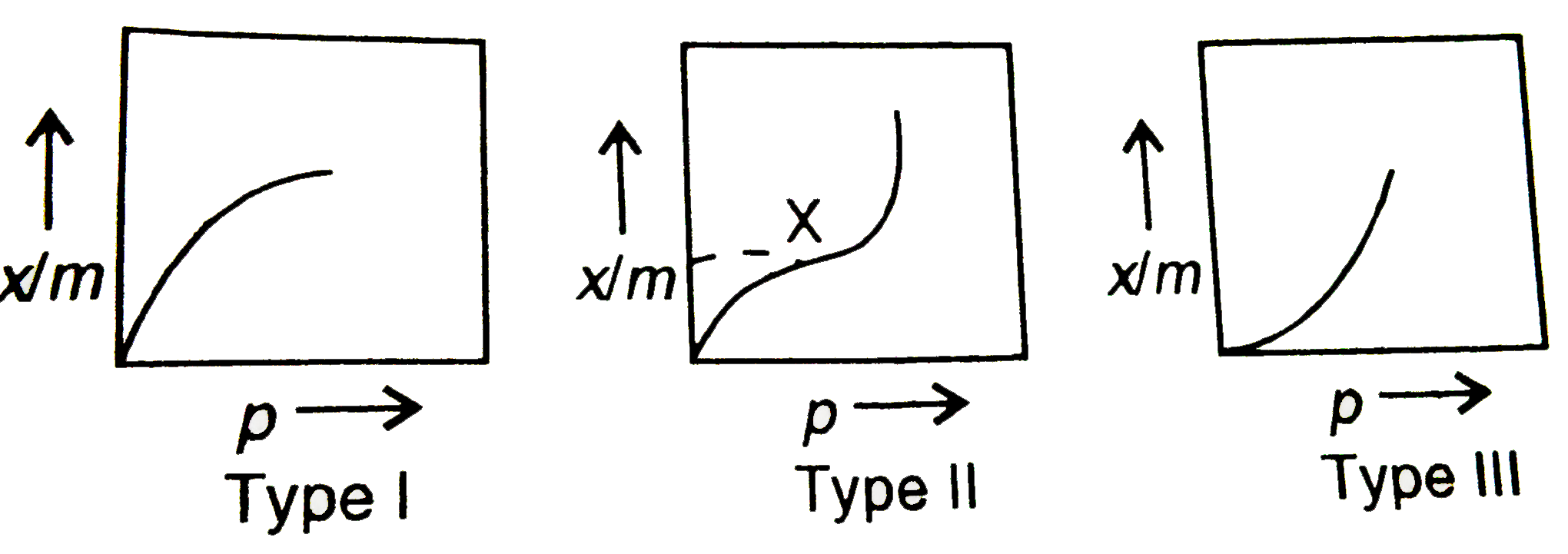
Physisorption Type I. Where there is formation of monolayer on the surface of adsorbent, this type of curve is obtained.
Physisorption Type II. The transition point 'X' of this physisorption isotherm indicates, that the formation of mono layer is complete and that of multilayer is started.
Physisorption Type III. This isotherm has no transition point. In this type of curve, the multimolecular starts before the completion of monomolecular layer.
On the basis of this comprehension, answer teh following question from the physisorption isotherm of a gas on a solid shown as under.
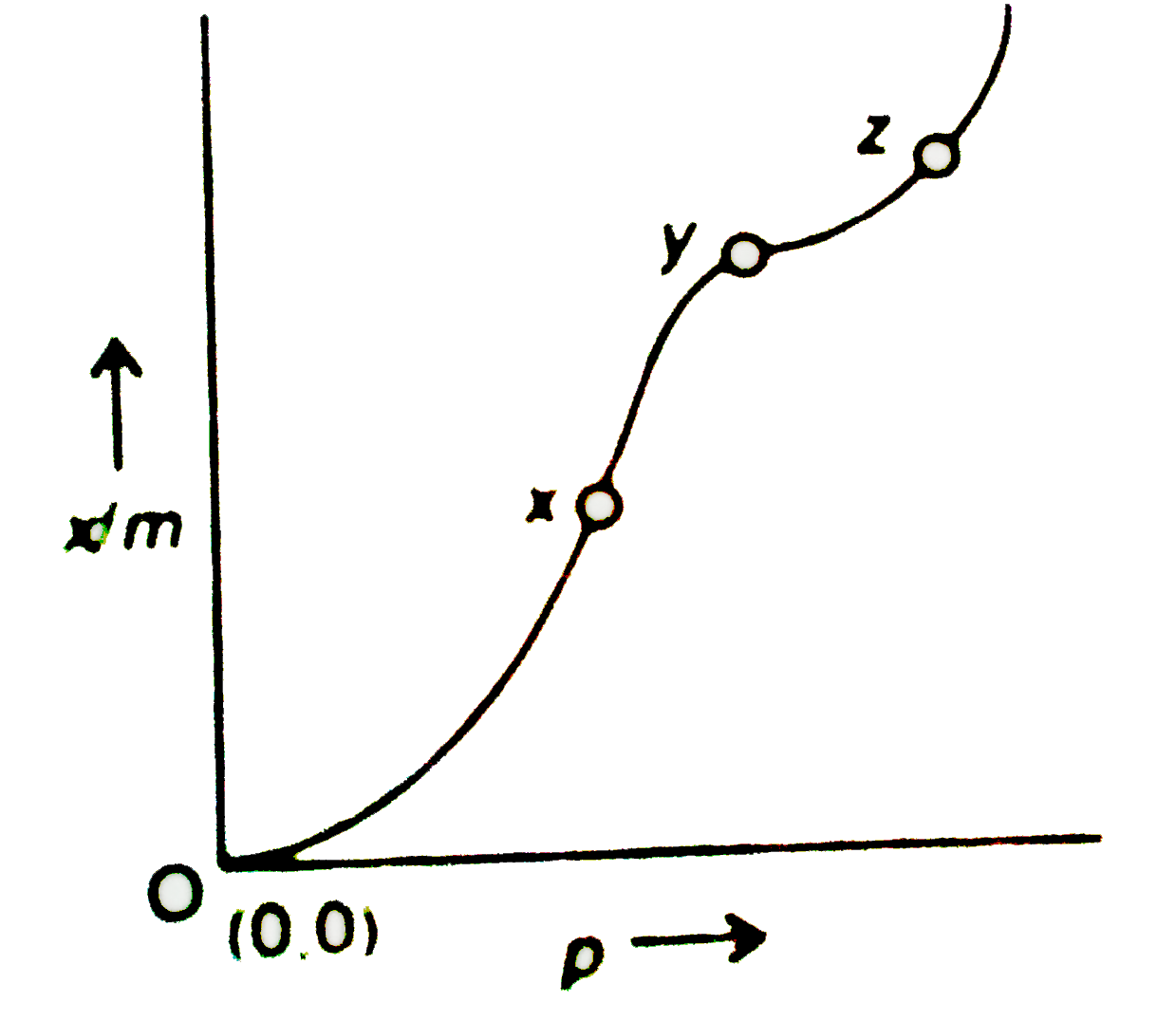
The point Y of physisorption isotherm correctly representsAformation of monolayerBformation of multilayerCfirst monolayer formation thereafter the formation of multilayerDnoneThe amount of gas adsorbed (x/m) is the function of temperature and pressure, which can be shown as under
xm= f(p,T)
The variation x/m and p, at constant temperature is known as adsorption isotherm
i.e., x/m=f(p) at constant temperature
Seven type of physisorption isotherms are known. Some of them are shown below
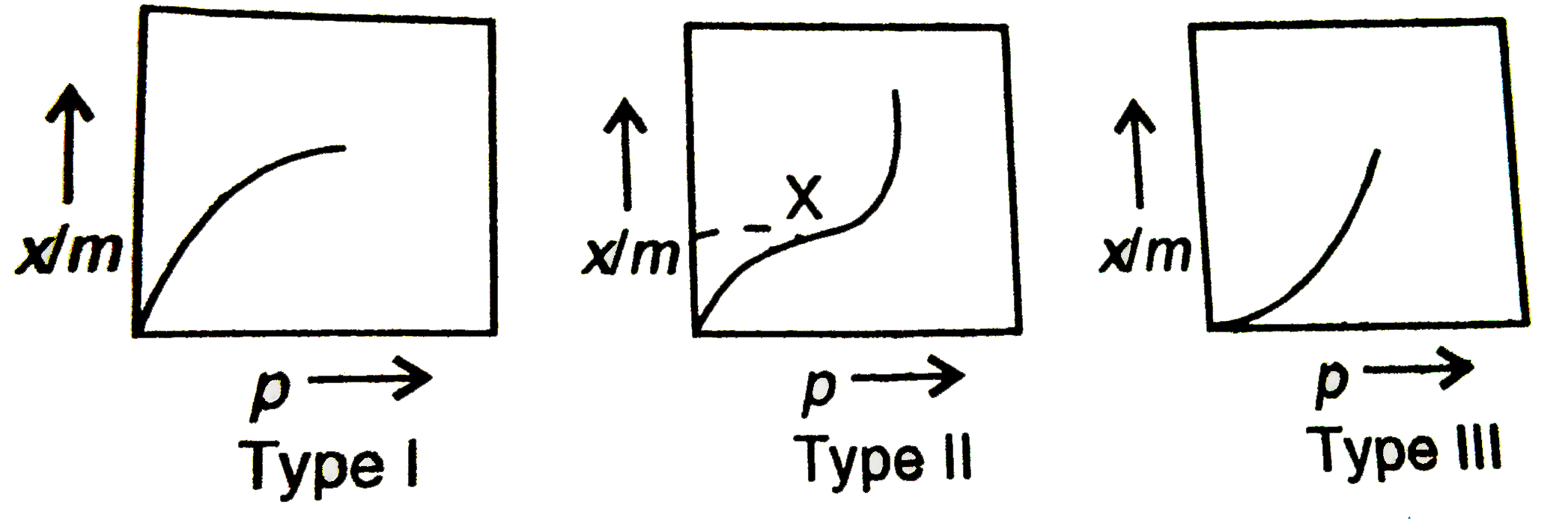
Physisorption Type I. Where there is formation of monolayer on the surface of adsorbent, this type of curve is obtained.
Physisorption Type II. The transition point 'X' of this physisorption isotherm indicates, that the formation of mono layer is complete and that of multilayer is started.
Physisorption Type III. This isotherm has no transition point. In this type of curve, the multimolecular starts before the completion of monomolecular layer.
On the basis of this comprehension, answer teh following question from the physisorption isotherm of a gas on a solid shown as under.
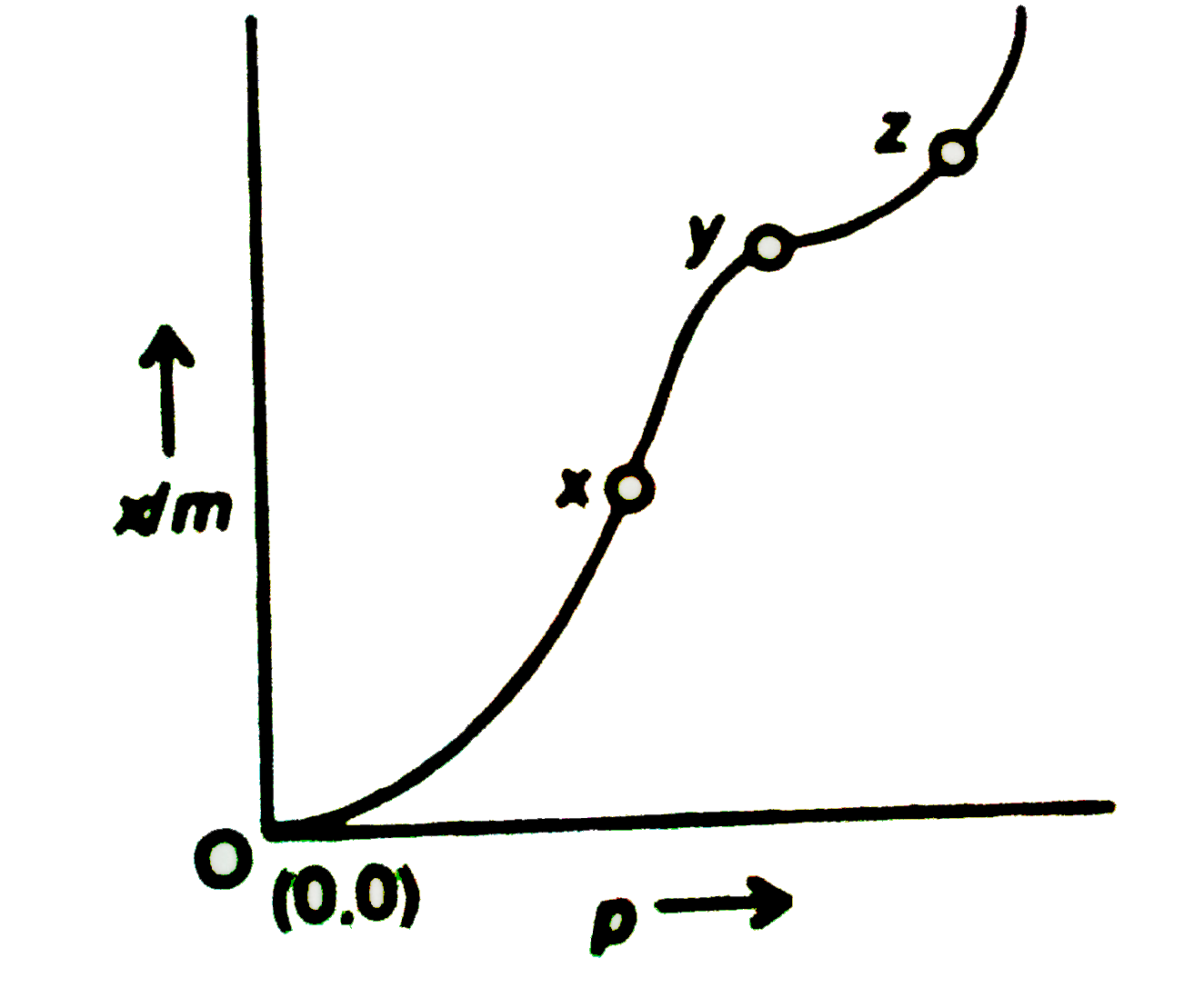
The portion ''OX'' of the physisorption isotherm representsAx/m is directly proportional to pBx/m is linear function of pressureCadsorption isotherm has no transition point, the formation of multi-molecular layer starts before the completion of monomolecular layerDBoth B and CThe amount of gas adsorbed (x/m) is the function of temperature and pressure, which can be shown as under
xm= f(p,T)
The variation x/m and p, at constant temperature is known as adsorption isotherm
i.e., x/m=f(p) at constant temperature
Seven type of physisorption isotherms are known. Some of them are shown below
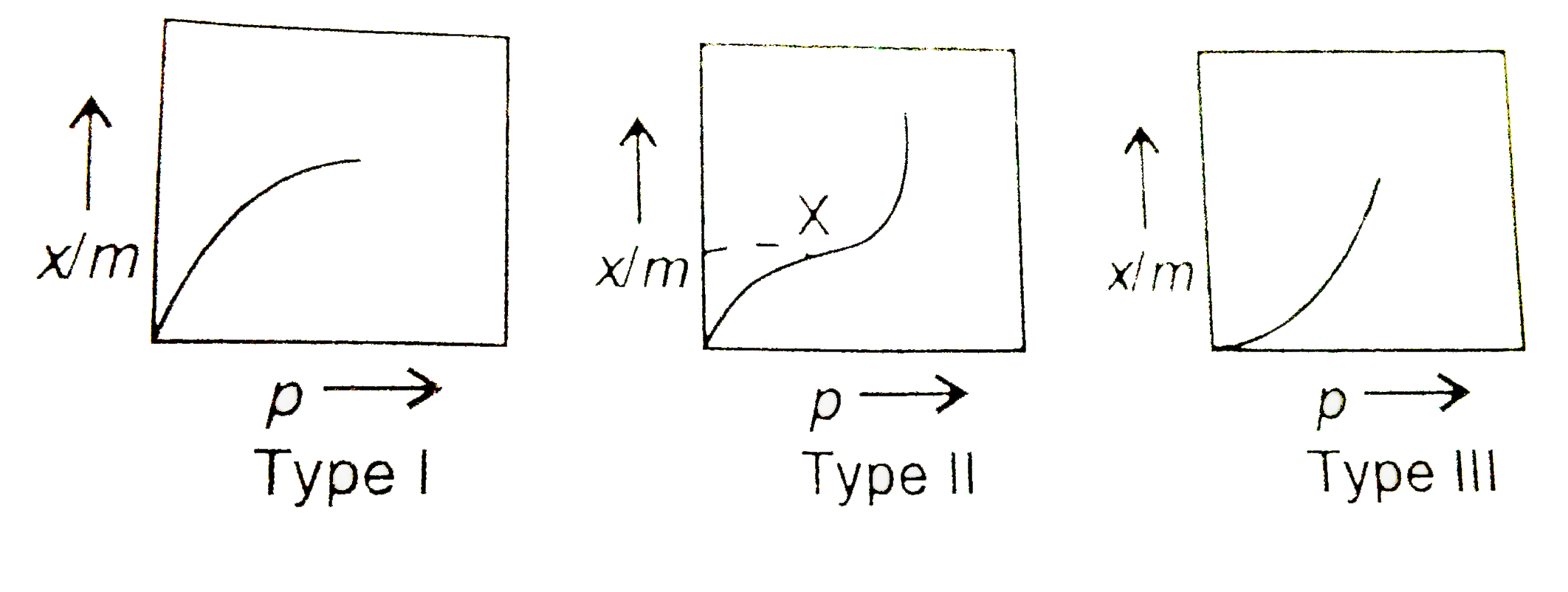
Physisorption Type I. Where there is formation of monolayer on the surface of adsorbent, this type of curve is obtained.
Physisorption Type II. The transition point 'X' of this physisorption isotherm indicates, that the formation of mono layer is complete and that of multilayer is started.
Physisorption Type III. This isotherm has no transition point. In this type of curve, the multimolecular starts before the completion of monomolecular layer.
On the basis of this comprehension, answer teh following question from the physisorption isotherm of a gas on a solid shown as under.
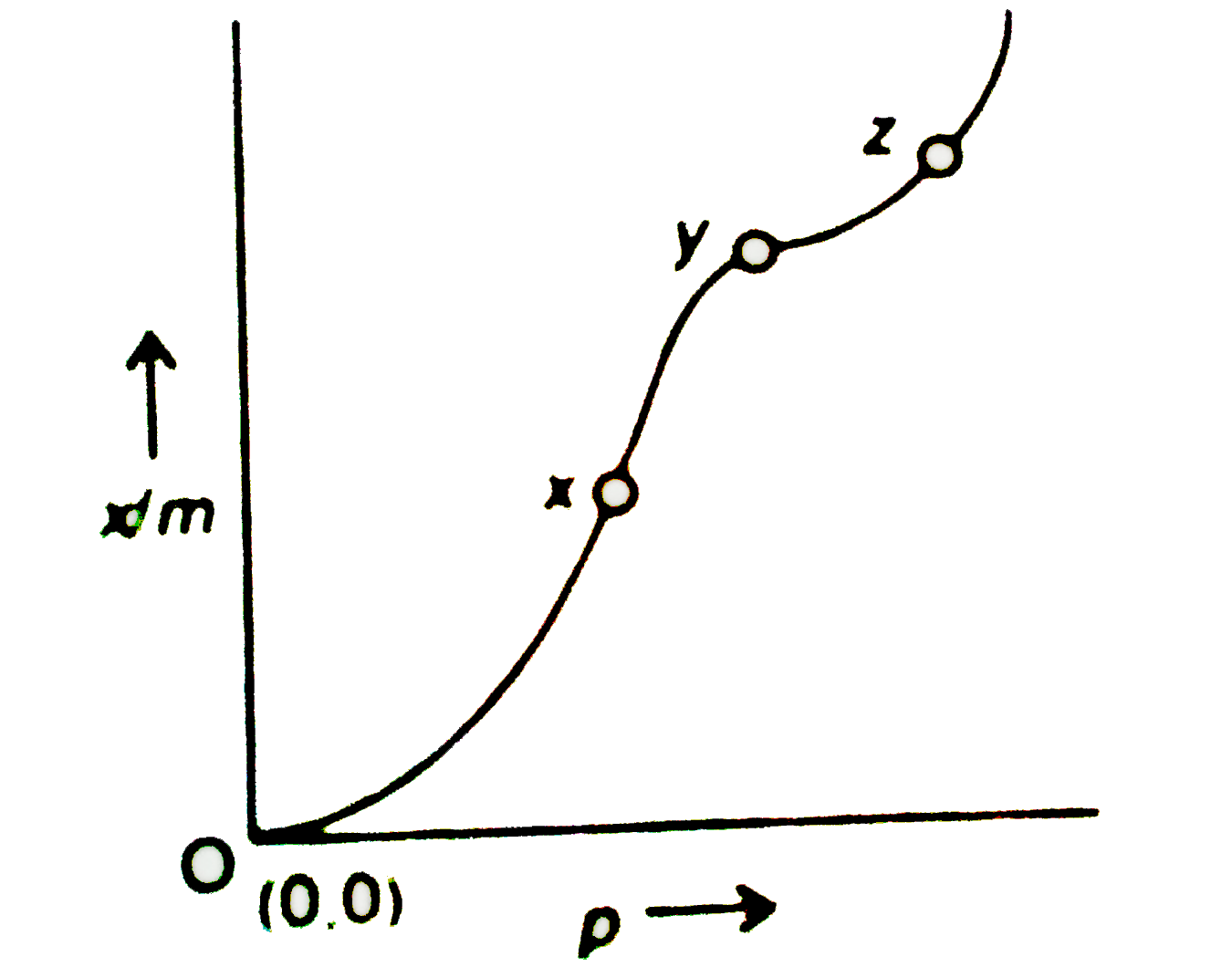
The point Z of the physisorption correctly representsAJust beginning of formation of multilayerBJust beginning of formation of monolyerCJust completion of multilayer and just formation of monolyerDxm∝pn where n > 1
The variation in the amount of gas adsorbed by the adsorbent with pressure at constant temperature can be expressed by means of a curve termed as adsorption
View SolutionFreundlich equation for adsorption of gases (in amount of Xg) on a solid (in amount od mg) at constant temperature can be expressed as
View SolutionFreundlich equation for adsorption of gases (in amount of x g) on a solid (in amount of m g) at constant temperature can be expressed as
View SolutionIf (x/m) is the mass of the adsorbate adsorbed per unit mass of adsorbent, p is pressure of the adsorbate gas and a and b are constant, which of the following represent Langmuir adsorption isotherm ?
View SolutionFreundlich equation for adsorption of gases ( in amount of x g) of a solid ( in amount of m g ) at constant temperature can be expressed as
View Solution
